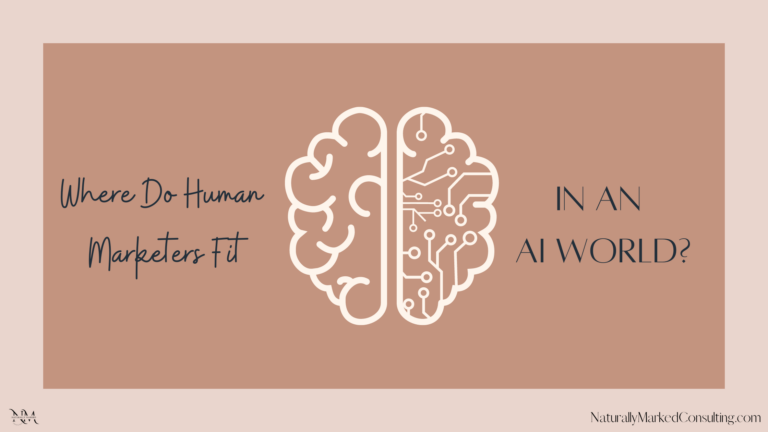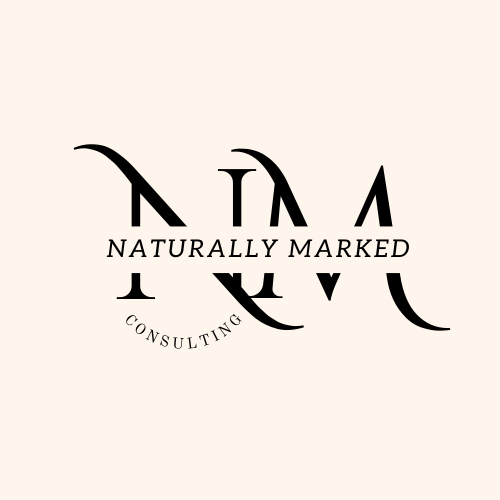
TLDR: Humans and AI can play nicely together in marketing. It’s all about finding the right balance.
Copywriting, web development, graphic design, social media ads, chatbots — you name it, chances are there is an A.I. tool that has touched it. This can seem overwhelming for a few reasons. For one, there are a ton of A.I. tools out there, and it seems like new tools are being developed all the time. But these tools are meant to help us as marketers and creatives, right?
…right?
Just like with any shiny brand new toy, individuals and companies are pushing various A.I. tools to the limit to see their true capabilities. And while childlike curiosity for a new, exciting concept is natural, it has started to make human creatives wonder how exactly they can fit in and play nicely with their artificial intelligence counterparts.
For those who haven’t gotten used to the idea, A.I. can seem more like the threat of replacement instead of a helpful tool. With every new development, and with companies quickly turning to suites of A.I. tools to help streamline marketing processes, marketers can start to feel like they are being pushed out. But is that really true? Is A.I. turning marketing into a place where humans no longer belong?
A.I. – It’s Not All Of A Sudden
Let’s be clear – artificial intelligence has always been somewhat present to help us move things along. For complex tasks like analytics, SEO, and marketing automation (for example), various AI tools have helped marketers figure out how to better relate to their intended audiences through relevant keywords, analyzing and predicting customer behavior, identifying qualified leads, etc. In fact, the assistance of AI in these instances means a more exact approach to any marketing effort. This leads to more efficiency and way less guessing and wasted budgets. Who can complain about that?
No one, really. And realizing just how much AI has supported marketers and creatives in the background can make us take a hard look at our careers and give AI its flowers.
The concern comes as tools like ChatGPT, DaVinci AI, Artiphoria, and AI-infused web development tools are being pushed to the forefront to handle the creative part of marketing, something that was exclusively handled by, well, a human. It requires a human mind to create an idea for a campaign, find the right emotion to craft impactful messaging, and design a photo to elicit a certain response. Up until now, a digital application couldn’t compete with a human, but machine learning nowadays is proving otherwise. These new developments are exciting for some businesses, as AI generated images and copy can lead to increased efficiency and eliminate the need for large teams of people to produce a single creative concept, allowing for faster content creation. On the other hand, there is a little bit of apprehension as some see AI art as lacking depth or creativity, and there have been more than a few suspected instances of copyright infringement. Not to mention that the implementation of AI has resulted in lost jobs as businesses have sought to automate as many processes as possible.
The recent developments of A.I. tools in the creative spotlight have become a bit overwhelming as people try to figure out where, and how, to best use them. And whether you’re part of a company that’s pushing A.I. to the forefront of marketing, or a do-it-yourself-er looking for A.I. to lend a big helping hand, it can be tough to figure out when A.I. can help, and when it could make your creativity obsolete.
Keeping the Human Touch in Your Marketing
The key to using A.I. tools successfully is remembering that they are just that — tools. We currently use these tools to help us predict customer behavior and consumer trends and monitor analytics. As we mentioned earlier, using data helps marketers develop a more targeted approach to campaigns, ads, social media, and web. AI can help us understand the data, but a human mind is still needed to interpret meaning and, ultimately, make the decision around the next steps to take. Without falling too deep into the rabbit hole, human-A.I. partnerships have fueled successful data driven campaigns, marketing automation, and data collection for decades.
The same could be true when it comes to the creativity behind your marketing.
Creative concepts in marketing require feeling, being in tune with emotions, and sensitivity — things that artificial intelligence and machine learning aren’t capable of on their own. In fact, it is because AI and ML obtain knowledge based on human input that the case for a live human monitor is so strong. This doesn’t just pertain to graphic design, but any situation where a computer is expected to handle anything pertaining to human interaction. Simply put, it just can’t; that’s not what it was designed for.
In 2016, the pitfalls of leaving AI to its own devices were showcased in Microsoft’s Tay Chatbot that was designed to learn from Twitter conversations and ended up learning from the wrong side of the social media platform. The result? A racist chatbot tweeting whatever it learned from any Twitter conversation, with no regard for context or vulgarity. The chatbot has since been updated, with guardrails in place to better control the content Tay is absorbing and retweeting. While this is just one issue, and an extreme one at that, it’s not all that uncommon for A.I. to make an egregious mistake.
An image from IBM’s ‘Trust What You Create’ campaign, highlighting the potential missteps of AI. Image courtesy of IBM and MarketingDive.com.
Although some of these issues were rectified, the very real danger of an A.I.-led campaign still stands. Without human input or monitoring, A.I. and machine learning tools are susceptible to bias, taking in the wrong information, or image and message distortion.
Ok, ok, we don’t want to scare you (sorry if we did); we’re highlighting how important it is for a human to be involved in this process. Marketing is inherently a human to human activity. Considering you are building relationships with new and existing human audiences, enlisting help from A.I. isn’t the worst thing in the world, but it can’t be the only thing in your marketing world.
Striking The Perfect Balance
While everything can’t be fully automated by A.I., perhaps there is still some room for artificial intelligence and humans to coexist harmoniously on a creative level. Here are a few ways we think you can successfully integrate artificial intelligence into your marketing.
Refine your prompts. Tools like ChatGPT and AI image tools can produce content, but they need specific instructions on how to do so. And remember — these tools don’t understand context or independent creative license. To make sure you don’t wind up with something unusable, offensive, or just downright scary, make sure you’re being very specific about the content you want your AI tools to produce.
Monitor, edit, proofread. Going along with the first point, even if you’ve told A.I. what you want, it’s still up to you to perform a quality check before your newly generated content goes out the door. At the end of the day, whatever marketing content A.I. has generated for you is still representative of your brand. Make sure it is aligned with your beliefs and objectives.
Use A.I. as support, not the other way around. We said it before and we’ll say it again: you can’t automate everything. Marketing is human! At its core, you’re finding new ways to talk to people, building relationships, and getting to know your audience(s). As helpful as A.I. can be, even with all of the cool new capabilities, it can’t do all of the legwork for you.
The Verdict?
It’s all about balance. We hate to be cliché, but it’s true what they say: too much of a good thing can be too much. A.I. tools are helpful, but they aren’t a replacement for human marketers. But there is an argument that these tools can successfully be used within your marketing efforts, as long as you are willing to monitor the content being created. After all, you’re the one in control of your marketing, no matter how much A.I. is involved.
We know all the new tools can be overwhelming, no matter where you might be in the process. As marketers, there is always some new software to learn. If you’re lost in the sea of A.I. and machine learning tools and need help understanding which ones to use and how they can benefit your marketing, contact us at hello@naturallymarked.com and we’ll work with you to figure out the best tools to push your marketing forward.
